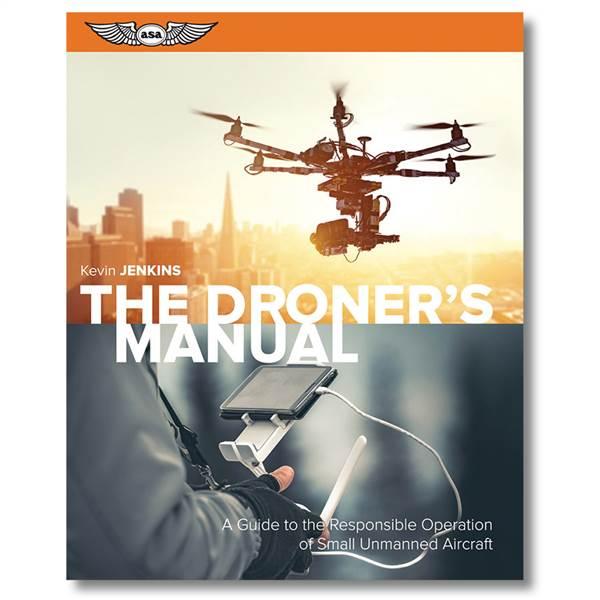Know your drone, inside and out
Unlike airplane and helicopter manuals that give pilots a thorough understanding of their aircraft, its capabilities, and both normal and emergency operation procedures, most unmanned aircraft are sold with comparatively bare-bones documentation, their inner workings a mystery to the uninitiated. The Droner’s Manual by Kevin Jenkins, published this month by Aviation Supplies & Academics Inc., takes the mystery out of fixed-wing and multirotor drones with a trove of foundational knowledge.
Jenkins writes clearly and concisely, taking an aviator’s systematic approach to choosing the right platform for the job, building it, fine tuning it, testing it, and deploying it.
For those inclined to build a drone from scratch, who have some comfort level with a soldering iron but limited drone-specific knowledge, there is a wealth of information to get started with here. Jenkins covers the considerations that go into choosing a basic design and aerodynamic fundamentals, and he also provides useful advice on component architecture, and the purpose and general function of each essential component of a multirotor or fixed-wing aircraft. (Jenkins, like many professionals in the field, wrestles with the use of the word “drone,” and briefly explains the history behind this word that has become standard nomenclature.)

While much of the detail may lack obvious relevance to those who fly factory-built drones that arrive fully assembled and ready to fly, such readers will probably still appreciate a more thorough understanding of how their aircraft works, what it is and is not capable of, and what to expect from it. Jenkins also offers advice on how to conduct a thorough flight test, and prepare for a first flight or return to service after repair with a methodical approach. He also offers advice on mission planning, risk mitigation, and other aspects of safe operation, including how to build effective checklists. He explains what tools and spare parts to pack in the field kit, and other factors to consider when planning missions.
If this sounds like an engineer’s approach to flying drones, that’s probably because Jenkins holds a degree in aerospace engineering from Embry-Riddle Aeronautical University and spent several years as an unmanned aircraft test engineer and operator, including deployments in Iraq and Afghanistan, according to a brief biography included in the book. He has more recently worked for small companies building and flying small unmanned aircraft for civilian applications.
For those inclined to scratch-build their own drone, Jenkins offers guidance and useful advice on the major decisions that must be made along the way; and for any pilot who seeks a thorough understanding of how drones work, and how to use them safely, Jenkins condenses his experience and expertise into an easy read. It covers the basic technical knowledge required to design, build, and fly a drone (with a little help from product manuals and the like, when it comes to specific settings and installations), but at 176 pages, it is streamlined enough that a reader does not have to have an engineering background to understand the complex chain of events that goes into making a quadcopter yaw, hover, or climb. Readers also can learn what proportional-integral-derivative control loops are, and how to tune them.
Jenkins even devotes a few words to the theory, basic design, and function of traditional helicopters, both manned and RC, though he advises beginners to start with another kind of aircraft.
“Helicopters are notoriously difficult to fly, requiring precise coordination of collective, cyclic, and yaw (leading RC helicopter pilots to tell you they are the best, often without being asked),” Jenkins wrote, also explaining that the mechanical complexity of helicopters, of any size, makes them more challenging to maintain as well as operate, and they’re generally not the best option for most of the missions with which drones are tasked.
The Droner’s Manual also includes a few pages on regulations, summarizing the various rules and guidelines that apply to hobbyists and commercial Part 107 operators, and offering web links, publication titles, and other information on where to look for more detailed study.
It is not encyclopedic, but a solid primer on the inner workings of these remarkable flying machines. For those who come to drones from a manned aviation or RC modeling background, much of this will be familiar, but even an expert is likely to find something useful.




